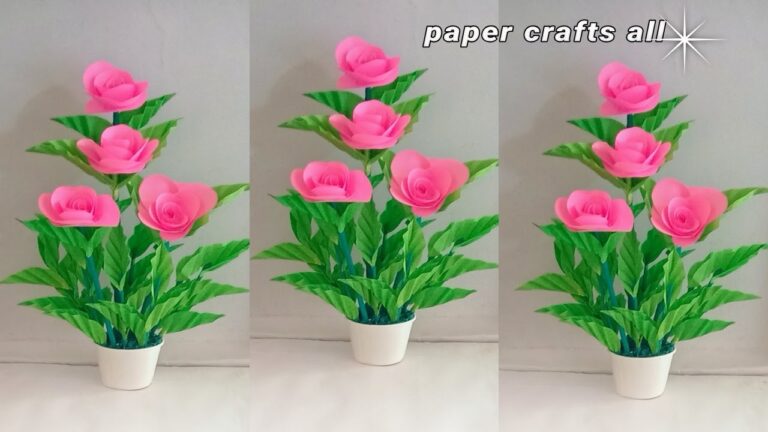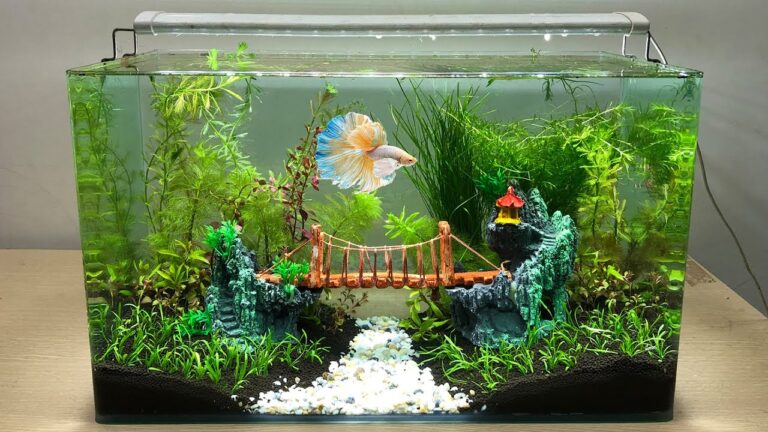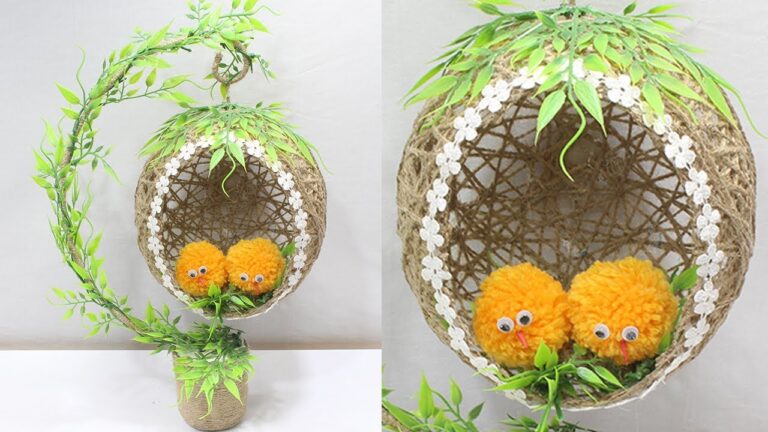How to Make Decorative Plates at Home: Step-by-Step Guide
Making decorative plates at home is a fun and creative activity. It allows you to personalize your décor.
With a few supplies and some imagination, you can create beautiful plates that reflect your style. Decorative plates add charm to any space. They can be used as art pieces or functional items. This blog post will guide you through the process of making your own decorative plates.
You don’t need to be an artist to create stunning designs. With easy steps and simple materials, anyone can do it. Whether you want to make a unique gift or add a personal touch to your home, this guide has you covered. Ready to get started? Let’s dive into the world of DIY decorative plates!
Introduction To Decorative Plates
Decorative plates can add a personal touch to your home decor. They are perfect for showcasing your artistic skills and creativity. Making decorative plates at home is fun and rewarding. You can customize them to match your style and preferences. This blog will guide you on how to create beautiful decorative plates.
Materials Needed
To start, gather all the necessary materials. You will need plain ceramic plates, paintbrushes, and acrylic paint. Pick up some stencils and painter’s tape. Don’t forget sealant to protect your designs. You might also want some decorative items like stickers or gems. These will add extra flair to your plates.
Benefits Of Homemade Plates
Creating homemade plates has many benefits. It’s a great way to express creativity. You can design plates that are unique and personal. These plates make thoughtful gifts for friends and family. Making plates at home can also be a relaxing hobby. It provides a sense of accomplishment and joy.
Another benefit is the cost savings. Store-bought decorative plates can be expensive. Making your own allows you to save money. Plus, you get exactly what you want. Homemade plates are also eco-friendly. You can repurpose old plates and give them new life. This reduces waste and promotes sustainability.
Choosing The Right Plate
Creating decorative plates at home is a fun and rewarding activity. It starts with choosing the right plate. This step is crucial for achieving a stunning final product. The right plate can enhance your design and make your decoration stand out.
Types Of Plates
There are several types of plates you can use. Dinner plates are a popular choice. They offer a large surface for your designs. Salad plates are smaller but also a good option. Charger plates are larger and often more decorative. Dessert plates are ideal for smaller, intricate designs.
Best Plate Materials
Choosing the best material is important. Ceramic plates are sturdy and hold paint well. Porcelain plates are smooth and offer a high-quality finish. Glass plates can give a unique, modern look. Melamine plates are durable and great for outdoor use. Stoneware plates add a rustic touch to your designs.
Consider your design and the plate’s use. This will help you choose the best plate material for your project.
Design Inspiration
Create beautiful decorative plates at home with simple materials. Use paints, stencils, and your imagination. Transform plain plates into stunning art pieces for your space.
Creating decorative plates at home can be a fun project. Finding the right design inspiration is key. You can draw ideas from various sources. From nature to modern art, inspiration is everywhere. Let’s explore some popular design styles. Then, we will help you find your own style.Popular Design Styles
Many people love traditional designs. Floral patterns are a common choice. They bring a touch of nature indoors. Geometric shapes are also popular. They offer a modern and clean look. Cultural designs add a unique flair. Think about Japanese or Moroccan patterns. These styles can make your plates stand out.Finding Your Own Style
Your style should reflect your personality. Think about what you love. Do you enjoy bright colors? Or do you prefer muted tones? Look around your home for ideas. What colors and patterns do you already have? Use these as a starting point. Sketch a few ideas before you start. This can help bring your vision to life. Experiment with different designs. You might discover a new favorite style. “`
Credit: blueskyathome.com
Preparing The Plate
Before you start painting, you need to prepare the plate. Proper preparation ensures the paint adheres well. This step-by-step guide will help you get ready.
Cleaning The Surface
First, clean the plate’s surface. Use warm soapy water to remove dirt and grease. Rinse well and dry with a soft cloth. This removes residues that can affect the paint.
Sanding And Priming
Next, sand the plate lightly. Use fine-grit sandpaper. This helps the primer stick better. Sanding creates a rough texture for the paint to grip.
After sanding, apply a thin coat of primer. Use a brush or spray primer. Let it dry completely before moving to the next step. Priming seals the surface and provides a smooth base for painting.
Creating The Design
Creating the design is the heart of making decorative plates. It is where your creativity shines. This step allows you to express your unique style. You can choose from various methods to create your design.
Sketching Your Design
Start with a simple sketch. Use a pencil to draw directly on the plate. This helps you visualize the final look. Don’t worry about mistakes; you can easily erase them. Keep your design simple at first. You can add details later. Sketching gives you a clear idea of what your plate will look like.
Using Stencils And Patterns
Stencils and patterns are great tools. They help you achieve clean lines and intricate designs. You can buy stencils or make your own. Place the stencil on the plate. Use a brush or sponge to apply paint. Lift the stencil carefully to reveal your design. Patterns can also guide your hand as you paint. They are perfect for creating repetitive designs.
Both methods allow for creativity and precision. Choose the one that suits your style. With practice, you’ll create beautiful decorative plates.

Credit: blueskyathome.com
Painting Techniques
Creating decorative plates at home is a fun and creative process. Painting your plates can add a personal touch that makes them unique. This section will guide you through different painting techniques. These will help you achieve beautiful and professional-looking plates.
Basic Brush Strokes
Start with basic brush strokes. Hold your brush at a slight angle. Use smooth, even strokes to cover your plate. Practice straight lines, curves, and dots. These will form the base of your design. Thinner brushes are best for detailed work. Thicker brushes are good for filling larger areas.
Blending And Shading
Blending and shading add depth to your design. Choose two or three colors. Start with the lightest color. Apply it to the plate. While it is still wet, apply the darker color next to it. Use a dry brush to blend the edges. This will create a smooth transition. Shading gives your design a 3D effect. This makes it look more realistic.
Adding Finishing Touches
Adding finishing touches to your decorative plates can elevate their appeal. It is the final step in making your creation stand out. These small details make a big impact. Let’s explore how to seal your design and add embellishments.
Sealing Your Design
Sealing your design protects it from wear and tear. Use a clear sealant spray or mod podge. Spray or brush it over the entire plate. Ensure even coverage to avoid bubbles. Allow the sealant to dry completely. This step adds a glossy finish and locks in your design.
Embellishments And Accents
Add embellishments to give your plate a unique look. Use rhinestones, beads, or glitter. Place them around the edges or in patterns. Secure them with a strong adhesive. Consider using fabric or lace for a textured effect. Experiment with different materials and colors. The goal is to make your plate visually appealing.
Caring For Your Decorative Plates
After putting in the effort to create beautiful decorative plates at home, it’s important to know how to care for them. Proper care ensures that your plates stay vibrant and undamaged for years. Here, we will discuss some essential tips and ideas to help you maintain your decorative plates.
Cleaning Tips
Cleaning your decorative plates is essential to maintain their beauty. Here are some tips:
- Gentle Hand Washing: Use a soft sponge with mild soap. Avoid harsh chemicals that can damage the design.
- Warm Water: Use warm water to dissolve any grime. Hot water can weaken adhesives on the plate.
- Avoid Scrubbing: Scrubbing can wear off the paint. Gently wipe the surface instead.
- Drying: Pat dry with a soft towel. Air drying can leave water spots.
Storage And Display Ideas
Proper storage and display keep your plates safe and enhance your home décor. Consider these ideas:
- Plate Stands: Use decorative plate stands. They showcase your plates elegantly and securely.
- Wall Racks: Install wall racks. They save space and create a stunning visual display.
- Cabinet Shelves: Place plates on cabinet shelves. Ensure they are dust-free and away from direct sunlight.
- Padding: Use padding between stacked plates. This prevents scratches and chips.
By following these tips, your decorative plates will remain beautiful and last for many years. Enjoy displaying your unique creations!

Credit: www.youtube.com
Conclusion
Creating decorative plates at home can be fun and rewarding. You get to add personal touches and creativity. It’s a great way to express yourself. Plus, these plates make excellent gifts. Remember to use safe materials and follow instructions carefully.
Enjoy the process and take your time. Each plate you make will be unique. So, start crafting today and see where your imagination takes you. Happy decorating!






